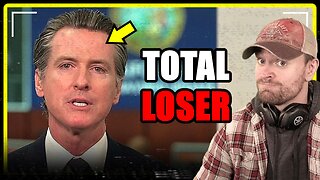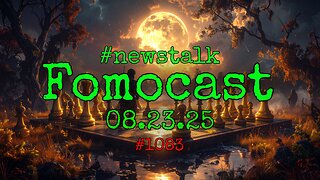Premium Only Content

Cashflow Quadrant by Robert T. Kiyosaki | Summary
Buy Here: https://amzn.to/4hmPDSb
"""Cashflow Quadrant"" by Robert T. Kiyosaki is a personal finance book that explores different ways to generate income and build wealth. It builds upon Kiyosaki's earlier work, ""Rich Dad Poor Dad,"" and introduces the concept of the cashflow quadrant, which categorizes individuals into four different quadrants based on their primary source of income. Here's a summary of the key points in the book:
1. The Cashflow Quadrant: Kiyosaki introduces the four quadrants of the cashflow quadrant: Employee (E), Self-Employed (S), Business Owner (B), and Investor (I). He explains the characteristics, mindset, and income generation methods associated with each quadrant.
2. Employee (E): The E quadrant represents individuals who work for someone else and receive a paycheck. Kiyosaki highlights the limitations of relying solely on earned income and encourages individuals in this quadrant to explore opportunities to generate passive income.
3. Self-Employed (S): The S quadrant includes self-employed individuals who own their businesses or work as independent contractors. While they have more control over their work, Kiyosaki warns about the trap of being self-employed without achieving true financial freedom.
4. Business Owner (B): The B quadrant represents individuals who own businesses and have systems and teams in place to generate income. Kiyosaki emphasizes the importance of building scalable businesses and leveraging the efforts of others to create wealth.
5. Investor (I): The I quadrant represents individuals who generate income through investments, such as stocks, real estate, or businesses. Kiyosaki emphasizes the power of investing in assets that generate cashflow and appreciate in value over time.
6. Mindset Shift: Kiyosaki emphasizes the need for a mindset shift to move from the E and S quadrants, where income is tied to time and effort, to the B and I quadrants, where income can be generated even without active involvement.
7. Financial Education: The book underscores the importance of financial education in order to make informed investment decisions and navigate the complexities of different quadrants. Kiyosaki encourages readers to continuously learn about money, investing, and business to improve their financial literacy.
Kiyosaki provides insights from his own experiences and uses real-life examples to illustrate the benefits and challenges of each quadrant. He encourages readers to assess their current quadrant and take steps to move towards the B and I quadrants, which offer greater financial freedom and opportunities for wealth creation.
In summary, ""Cashflow Quadrant"" presents a framework for understanding different income-generating paths and encourages individuals to move from relying solely on earned income to building businesses and investing in assets. By exploring opportunities in the B and I quadrants and developing financial literacy, individuals can work towards achieving financial independence and building lasting wealth."
-
 2:40:10
2:40:10
DLDAfterDark
5 hours ago $0.11 earnedDLD Live! Feat. Red Dawn Readiness! Glock FRT's - Striker Fire Safety Concerns - ACE Trigger
11.4K1 -
 2:40:21
2:40:21
BlackDiamondGunsandGear
4 hours agoAre ALL Striker Fired Pistols UNSAFE? // After Hours Armory
27K4 -
 6:34:50
6:34:50
SpartakusLIVE
8 hours ago#1 Saturday Spartoons on RUMBLE PREMIUM
102K6 -
 1:04:59
1:04:59
Man in America
9 hours ago“Summoning the Demon” — The AI Agenda Is FAR WORSE Than We Know w/ Kay Rubacek
34.7K21 -
 2:16:48
2:16:48
Tundra Tactical
7 hours ago $0.07 earned🎯💥 The World’s Okayest Gun Show 🔫😂 | LIVE Tonight on Rumble!
20.2K -
 3:36:03
3:36:03
Mally_Mouse
1 day ago🌶️ 🥵Spicy BITE Saturday!! 🥵🌶️- Let's Play: Tower Unite!
43.6K2 -
 58:59
58:59
MattMorseTV
7 hours ago $1.27 earned🔴Trump just BROKE Newsom.🔴
59.9K68 -
 18:14
18:14
Her Patriot Voice
7 hours agoWho Is WORSE for NYC: Trump Girl or Socialist?
39.6K30 -
 3:39:42
3:39:42
SavageJayGatsby
7 hours agoSpicy Saturday with Mally! | Road to 100 | $300 Weekly Goal for Spicy Bites!
41.5K1 -
 3:35:50
3:35:50
FomoTV
9 hours ago🚨 Swamp Theater: FBI Raids Bolton 🕵 Still NO Epstein Files, Trump's Troops & the Red Heifer Hoax 🐂 | Fomocast 08.23.25
17.7K5